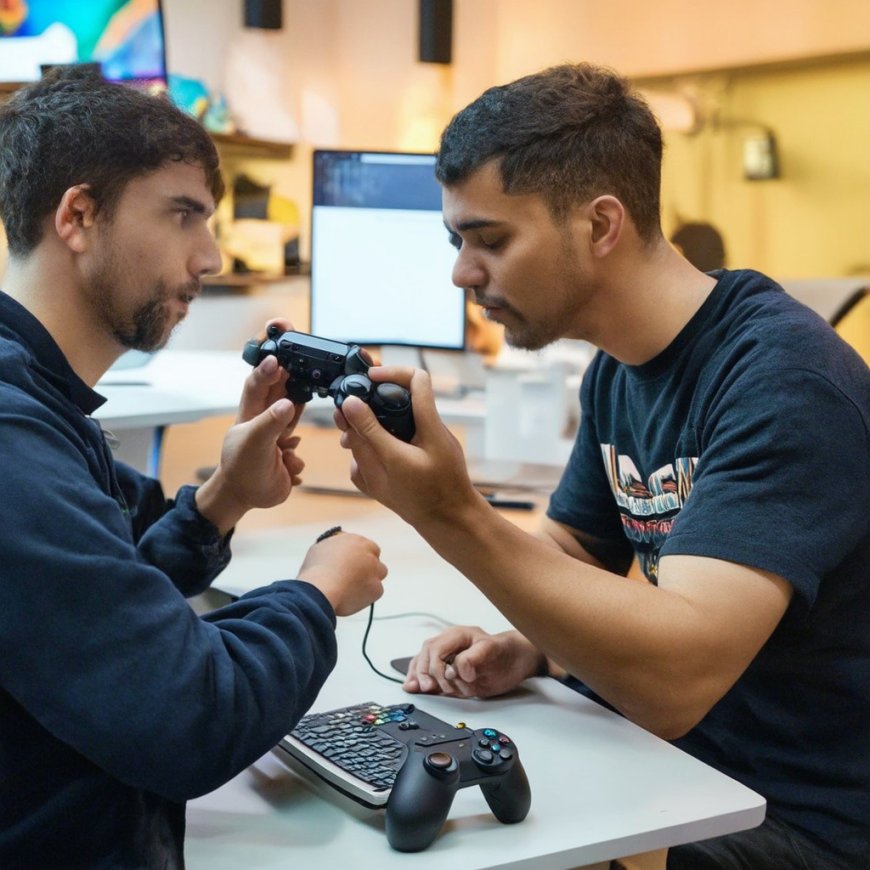How This Singular Trend is Redefining the Gaming Sphere
In the ever-evolving world of gaming, a singular trend has emerged, transforming how players engage, create, and experience games. Cloud gaming is not merely a new approach; it’s a revolution that breaks down barriers, allowing gamers access to high-quality, console-level experiences without expensive hardware. This shift not only democratizes gaming but also reshapes development strategies, empowering creators to innovate rapidly and reach a broader audience. Explore how this trend is redefining the gaming sphere, bridging gaps between developers and players, and setting the stage for the future of immersive entertainment.
How This Singular Trend is Redefining the Gaming Sphere
As a devoted observer of the gaming realm, I’ve witnessed myriad trends make fleeting impacts, each reshaping the way we engage with virtual landscapes. Yet, a particular wave has recently emerged that distinguishes itself through a profound influence on the industry: the ascent of cloud gaming. This paradigm doesn’t merely revolve around streaming—it’s redefining the essence of gaming itself. Leveraging cloud technology, players gain access to premium-quality games across various devices, eliminating the need for costly hardware or time-consuming downloads. The ramifications are vast, from democratizing gaming access for underserved communities to transforming the financial structures of game creation. In this analysis, we’ll delve into how cloud gaming is revolutionizing the gaming experience for both players and industry creators. Examining its advantages, hurdles, and groundbreaking potential for the future, this trend reveals itself not as a fleeting novelty but as a cornerstone for the industry’s future.
Adaptive Development Expands Game Creation Horizons
In my experience, adaptive development has dramatically accelerated game production by allowing teams to adjust resources in tandem with project needs. This elasticity not only streamlines the workflow but fosters a collaborative spirit among team members. By embracing modular design, distinct facets of a game can be cultivated in unison, allowing for faster cycles and more immediate feedback. Thus, I’ve observed ideation blossoming as a continual process, sparking innovative solutions free from rigid timelines.
Moreover, this emphasis on customization within adaptive development cultivates an experience tailored to each player. Tools that support adaptability empower developers to integrate a diverse range of content that honors the intellectual property of original creators. This enhances gameplay while instilling respect for creative contributions across the industry. Ultimately, this trend positions us to craft immersive games while upholding ethical standards.
Accelerated Production Meets Rapid Consumer Demand
The acceleration of production cycles has noticeably shortened development timelines, benefitting both developers and players. Modern tools and technologies allow teams to swiftly prototype, and test ideas in a rapid, iterative process. This efficiency saves invaluable time and ensures that end products resonate with target audiences. In my observations, the ability to pivot quickly based on feedback nurtures a culture of constant refinement, allowing for the swift incorporation of innovations and adjustments.
Enhanced collaboration, enabled by streamlined processes, has revolutionized team dynamics. Real-time idea sharing cultivates a more engaging workflow, leading to creative designs that respect intellectual property. By valuing the input of original creators, we generate games that are not only inventive but also reverent toward the industry’s legacy.
Enriched Collaboration Elevates Team Synergy
The infusion of effective collaboration has brought a seismic shift to team dynamics, prioritizing communication and mutual respect. From my vantage, cross-functional teams, armed with collaboration tools, dismantle silos and foster a sense of collective ownership. This drives morale and accountability as every member feels intrinsically tied to the project’s outcome. This synergy doesn’t just enhance the gaming experience but sets a higher bar for development standards.
Ideation Ignites Original Concepts
Ideation sessions focused on unrestrained creativity, have proven to be a wellspring for groundbreaking concepts. I’ve observed fresh narratives, unique gameplay mechanics, and innovative visual styles emerge from the most unanticipated discussions. This iterative process refines ideas, enhancing collaboration throughout the development cycle. By honoring intellectual property during ideation, we nurture originality while safeguarding the integrity of pre-existing works, fostering a vibrant culture of creativity within the industry.
Personalization Creates Unique Gaming Connections
Personalization in gaming has fundamentally altered how players bond with their favorite titles, creating experiences distinctly tailored to their preferences. The ability to adjust character designs, gameplay mechanics, and story arcs cultivates a sense of belonging within the virtual world. This level of engagement drives user satisfaction, deepening emotional ties. By incorporating adaptive development practices, we can deliver personalization across diverse gaming platforms, ensuring players feel valued and recognized.
Intellectual Property Respect Builds Community Trust
Respect for intellectual property has become crucial in crafting an ethical gaming environment. When creators honor the rights of original developers, they build a foundation of trust with the gaming community. Players invest in games from studios with ethical standards, knowing these titles are backed by true innovation. This fosters long-lasting relationships between developers and players, encouraging collaborative efforts where creators feel secure sharing their unique visions.
An environment that respects intellectual property also enhances collaboration among developers, artists, and writers. Knowing that contributions are protected sparks innovation and ideation, enriching the gaming experience with diverse voices. This collaborative culture resonates with players, ultimately elevating the quality and authenticity of each game.
Collaborative Tools Streamline Production
Integrating collaborative tools has reshaped game development, amplifying productivity and creativity. These tools enable scalable development, allowing teams to work seamlessly regardless of location. Real-time communication, project management, and asset sharing minimize revisions and miscommunication, streamlining workflows to accelerate game production. This efficiency fosters an environment where ideas evolve swiftly, leading to richer gameplay and personalized content.
These tools enhance brainstorming sessions, welcoming diverse perspectives and promoting a culture of innovation. When concepts and feedback can be effortlessly shared, team members are inspired to push creative boundaries. Consequently, the collective vision translates into a game that resonates deeply with players, reflecting both the team’s ingenuity and the community’s preferences.
Scalability Fuels Industry Agility
Adaptability is imperative in the gaming industry, where technological advancements and shifting consumer interests are constant. Scalable solutions empower rapid responses, whether by expanding teams or integrating new technologies. This agility keeps projects relevant while allowing experimentation with new features that captivate players, aligning creative ambition with industry trends.
Safeguarding intellectual property becomes increasingly essential as scalable solutions evolve. Robust protection mechanisms allow for innovation while preserving creative integrity, creating a fertile ground for imaginative ideas to thrive.
Expedited Production Meets Gamers’ Expectations
The speed of game production now aligns more closely with the expectations of today’s gamers. Cloud-based tools and agile methodologies enhance cross-functional team collaboration, streamlining communication to ensure all contributors remain aligned. Quick iteration based on player insights enables a more tailored product, satisfying evolving preferences.
Personalization has taken precedence, with analytics and machine learning identifying player behaviors to customize experiences. This personalized approach enriches engagement, fostering a deeper bond between players and developers. By honoring creative visions and efficiently crafting content, developers can build connections that resonate with audiences while respecting the foundations of intellectual property.
Personalization Boosts Engagement and Satisfaction
Enabling players to customize elements like difficulty levels, character designs, and story pathways strengthens the connection between the player and the game. This recognition of individual preferences elevates engagement and creates lasting emotional investments.
Incorporating personalization with respect for intellectual property enriches the gaming ecosystem. By integrating diverse content that honors existing works, we cultivate a vibrant space where creativity and customization thrive, satisfying both player expectations and industry ethics.
In conclusion, this evolution toward community-driven experiences represents a tectonic shift within the gaming sphere. As players become active participants rather than mere consumers, they shape the digital worlds they inhabit. This trend fosters stronger connections between players and creators, introducing innovative gameplay and narratives that resonate on a personal level. Looking ahead, it’s exciting to envision how this trend will continue pushing the boundaries of what gaming can be, enhancing our shared journey in this dynamic landscape.



